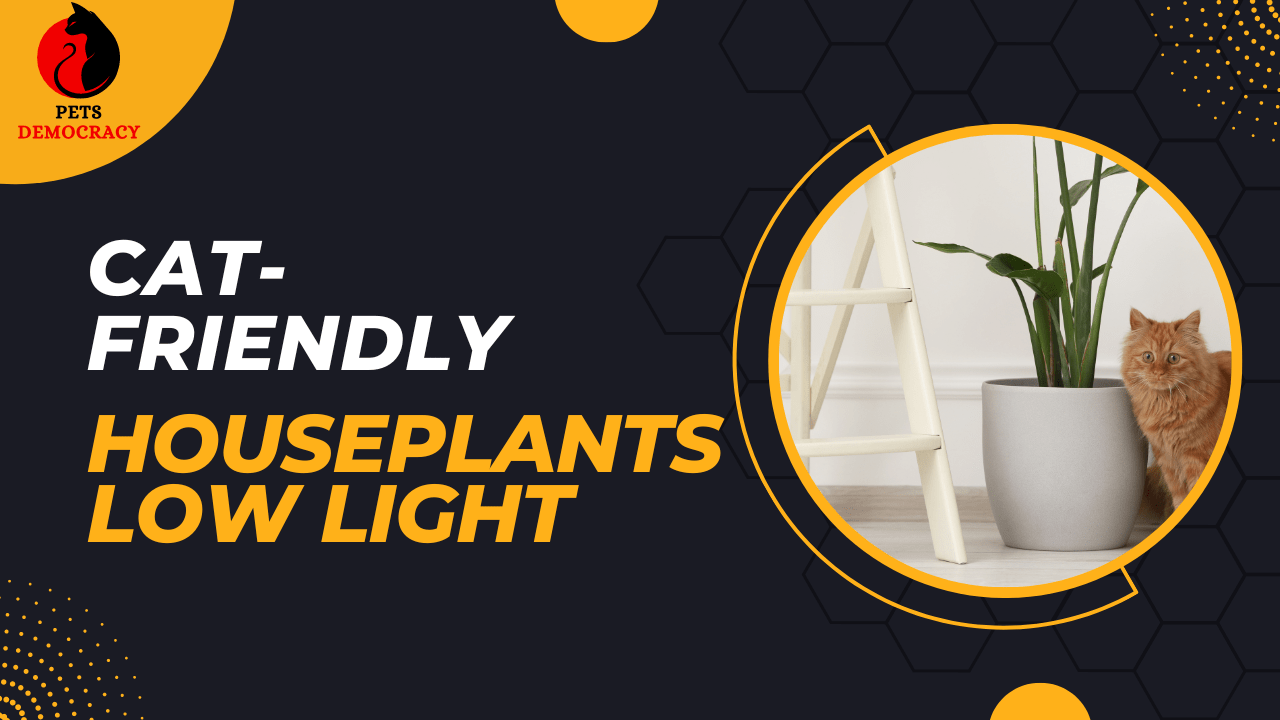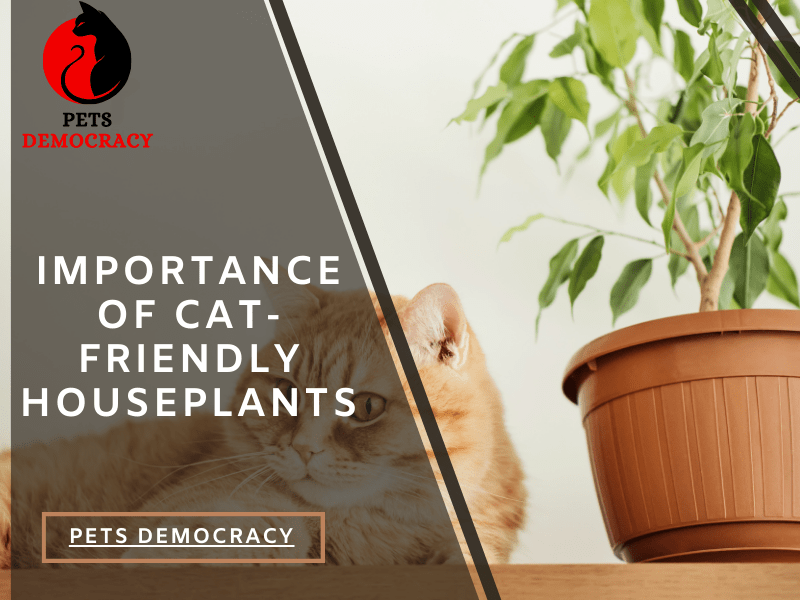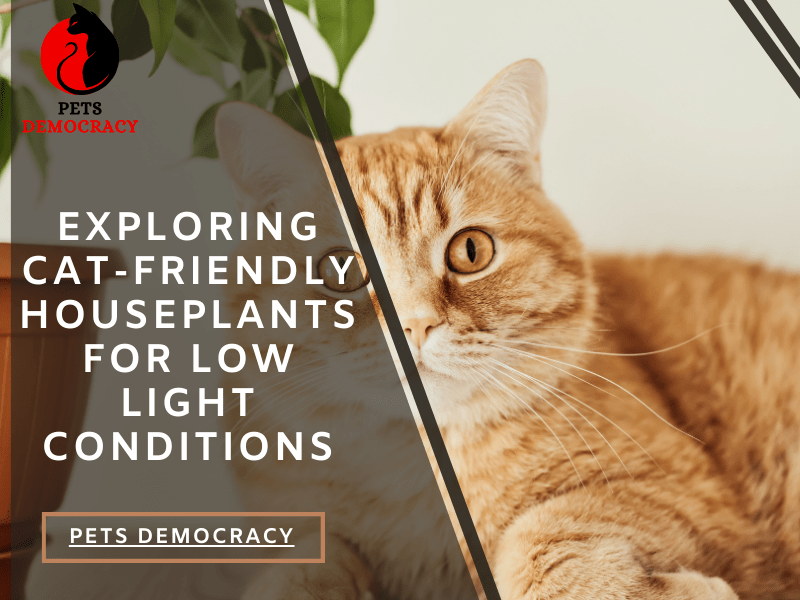
In recent years, the trend of bringing nature indoors has gained significant momentum. Houseplants not only add a touch of greenery to your living space but also contribute to improved air quality and overall well-being.
However, for pet owners, especially those with curious feline companions, choosing the right plants becomes crucial.
In this comprehensive guide, we delve into the realm of “Cat-Friendly Houseplants Low Light,” exploring suitable options and essential tips for creating a harmonious environment where pets and plants can coexist peacefully.
Understanding the Importance of Cat-Friendly Houseplants

Cats are notorious for their inquisitive nature and tendency to nibble on plants. While many houseplants add aesthetic appeal to your home, not all are safe for our feline friends.
Toxic plants can pose serious health risks if ingested by cats, leading to symptoms ranging from mild irritation to severe poisoning. Therefore, selecting cat-friendly houseplants is paramount for ensuring the safety and well-being of your pets.
Exploring Cat-Friendly Houseplants for Low Light Conditions

- Spider Plant (Chlorophytum comosum)
- Cat Friendly Houseplants Low Light: Spider Plant
- Benefits of Spider Plant for Cats
- How to Care for Spider Plant in Low Light Environments The Spider Plant is renowned for its air-purifying properties and non-toxic nature, making it an excellent choice for homes with cats. With its arching foliage and easy maintenance, this plant thrives even in low light conditions, brightening up any corner of your home without posing any harm to your furry companions.
- Parlor Palm (Chamaedorea elegans)
- Cat-Friendly Houseplants Low Light: Parlor Palm
- Why Parlor Palm is Safe for Cats
- Tips for Growing Parlor Palm in Low Light Settings The Parlor Palm is a resilient and elegant plant that adds a tropical touch to indoor spaces. Its non-toxic nature makes it a popular choice for pet owners, and its ability to thrive in low light makes it a versatile option for various rooms in your home.
- Boston Fern (Nephrolepis exaltata)
- Cat-Friendly Houseplants Low Light: Boston Fern
- Benefits of Boston Fern for Cats
- Caring for Boston Fern in Low Light Conditions The Boston Fern is prized for its lush foliage and air-purifying qualities. This pet-friendly plant enjoys humid environments and can tolerate low light, making it an ideal choice for bathrooms or other areas with limited sunlight.
- Cast Iron Plant (Aspidistra elatior)
- Cat-Friendly Houseplants Low Light: Cast Iron Plant
- Why Cast Iron Plant is Suitable for Cat Owners
- Growing Cast Iron Plant in Low-Light Environments The Cast Iron Plant lives up to its name by thriving in low-light conditions and enduring neglect. Its sturdy, dark green leaves make it a visually appealing addition to any space, while its non-toxic properties ensure the safety of your feline companions.
Tips for Creating a Cat-Friendly Environment with Houseplants
- Place plants out of reach: Opt for elevated surfaces or hanging planters to prevent cats from accessing plants.
- Provide alternative greens: Offer cat grass or catnip as safe alternatives to satisfy your pet’s natural urge to nibble on foliage.
- Monitor for signs of toxicity: Familiarize yourself with common symptoms of plant poisoning in cats, such as vomiting, drooling, or lethargy, and seek veterinary attention if necessary.
FAQs about Cat-Friendly Houseplants Low Light
- Are all low-light houseplants safe for cats? While many low-light houseplants are safe for cats, it’s essential to research specific varieties to ensure they are non-toxic.
- How can I tell if a plant is toxic to cats? Websites such as the ASPCA’s Animal Poison Control Center provide comprehensive lists of plants that are toxic to cats. For further advice, speak with your veterinarian.
- Can I train my cat to leave houseplants alone? While some cats may learn to avoid plants with proper training and deterrents, it’s essential to provide safe alternatives and supervise your pet’s interactions with houseplants.
- What should I do if my cat ingests a toxic plant? If you suspect your cat has ingested a toxic plant, contact your veterinarian or an emergency animal poison control hotline immediately for guidance.
Conclusion
Integrating houseplants into your living space can enhance aesthetics and promote a healthier indoor environment. By selecting cat-friendly houseplants variety that thrives in low light conditions, you can create a safe and inviting atmosphere for both you and your beloved pets.
Remember to research each plant’s toxicity and implement measures to prevent access to potentially harmful foliage. With proper care and consideration, you can enjoy the beauty of indoor gardening while prioritizing the well-being of your furry companions.


